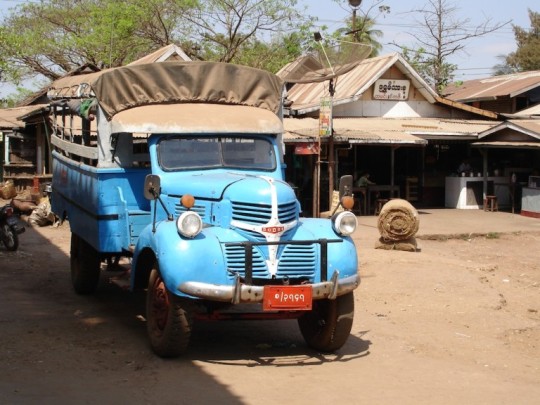#burma road
Text
The Women's Auxiliary Service (Burma), or WAS(B), consisted of a band of 250 British women, also known as the Chinthe Women, who worked alongside troops during the Burma campaign. One soldier remembered a 'Chinthe Woman':
The Burma Road was being washed away as my Platoon was marching towards Pegu. In the distance we saw a lone lady standing by a table in the rain, and as we got nearer we saw she had lots of mugs of hot tea on the table. She gave us all tea and a packet of cigs and a wad. She was a lovely Scots lady who must have been 50 years old. I spoke to her and told her she was too near the guns, and she should go to a safer place, after all the Japs were only 4 miles up the road. She would not leave and said, 'There will be other soldiers behind you who will want tea. I am just a WAS(B).'
"Normal Women: 900 Years of Making History" - Philippa Gregory
#book quotes#normal women#philippa gregory#nonfiction#women's auxiliary service burma#wasb#chinthe women#burma#myanmar#burma road#platoon#pegu#japanese#raining#hot tea#tea#cigarettes#tobacco#guns#get to safety#soldiers
2 notes
·
View notes
Photo

“NEW THREAT TO BURMA ROAD,” Vancouver Province. May 18, 1942. Page 8.
----
This map, detailing the distances between each point on the much-battered Burma Road, shows a second route which may be taken by the Nipponese to outflank the Chinese armies now successfully defending the highway near Lungling. This route follows the railway from Indo-China to Kunming, and is through difficult mountain country.
Meanwhile Chinese guerrilla bands between Lashio and Lungling are impeding the Japanese advance. Along the Indian border, the British have dug in on new lines after a slow retirement, which afforded precious weeks for completing the defense of northeast India.
#burma road#invasion of burma#china burma india theater#kunming#lashio#british india#british burma#british raj#british empire#imperial japan#world war II#chinese soldiers#chinese army
2 notes
·
View notes
Text
Tracing the old Burma Road
The disused Irish railway that runs from Claremorris, Co. Mayo via Kiltimagh and Charlestown to Colloney, Co. Sligo is known as the ‘Burma Road.’
This last saw trains in the mid-1970s, yet much of the track and right-of-way remains intact.
A railbike operation is based at the old station in Kiltimagh.
After St. Patrick’s Day, Kris and followed a portion of the Burma Road on our drive toward…
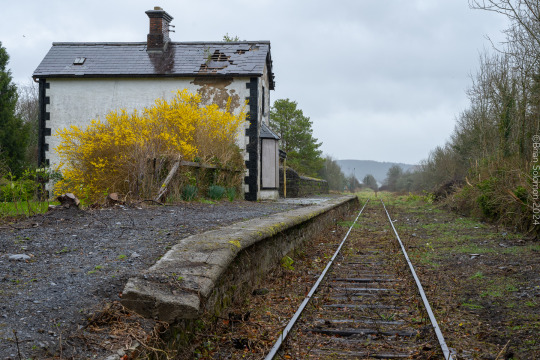
View On WordPress
0 notes
Text
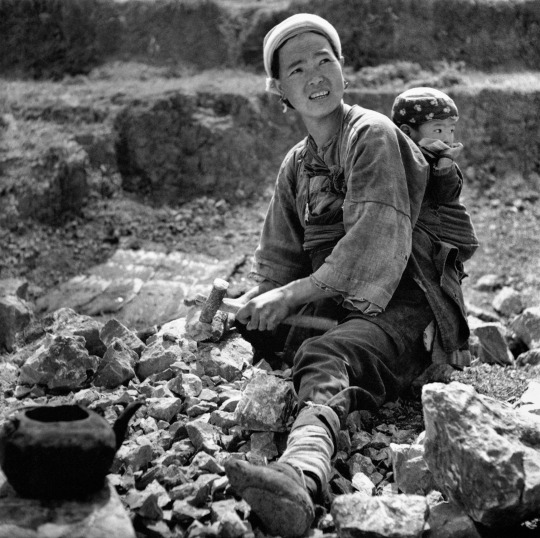
George Rodger. A Chinese woman breaking stones for repairs to the Burma Road, Burma 1942.
100 notes
·
View notes
Note
Do the Pashtun people of Afghanistan and Pakistan have Jewish ancestry?
The Pashtuns, now Afghanistan’s majority ethnic group and heavily involved in the establishment of the Taliban, sometimes call themselves "Bani Israel" and have a tribal legend which states that a Jewish group settled near the modern town of Herat and later converted to Islam after their leader met with Prophet Mohammed. Jewish Virtual Library writes that some Pashtuns have Jewish sounding names such as Asheri, Binyamin and Naftali, and that they practice Jewish customs such as marrying under a chuppah, lighting candles on fridays and circumcising their sons eight days after birth. This could also be explained through the Pashtuns’ connection with Jewish warriors, merchants, and administrative officers who traveled and settled on the Silk Road and left their influence on the local residents — but it is certainly intriguing.
The Assyrians conquered the kingdom of Israel some 2,730 years ago, scattering 10 of the 12 tribes into exile, supposedly beyond the mythical Sambation river. The two remaining tribes, Benjamin and Judah, became the modern-day Jewish people, and the search for the lost tribes has continued ever since. Some have claimed to have found traces of them in modern day China, Burma, Nigeria, India, Central Asia and Ethiopia. But it is believed that the tribes were dispersed in an area around modern-day northern Iraq and Afghanistan, which makes the Pashtun connection the strongest.
However, an Israeli government-funded DNA test found no genetic link between Jews and Pashtuns. They seem to share a greater affinity with Central Asian populations such as Tajiks or Turkmens, as well as with some Iranian and Caucasian groups. Whatever might be true, most Pashtuns today are strict Muslims with their own language and culture and have no interest in reconnecting with these assumed Jewish roots.
63 notes
·
View notes
Text
By: Keith Woods
Published: Jul 2, 2023
A look at slavery outside of the West
It has become popular to blame White people for slavery, to the point that many actually believe slavery was invented by or exclusively practiced by Europeans.
But the history of slavery outside the West is far more brutal.

The Arab slave trade emerged in the 7th century, 10 centuries before the Atlantic slave trade
Arabs sold Africans to the Middle East for a variety of jobs such as domestic work or harem guards - castrating male slaves was common, causing over half of males to bleed to death

The Arab slave trade was particularly brutal: it's estimated that 3/4 captured slaves died before they reached the market for sale
Historians estimate that between 10 and 18 million people were enslaved by Arab slave traders, including women and children taken as concubines.
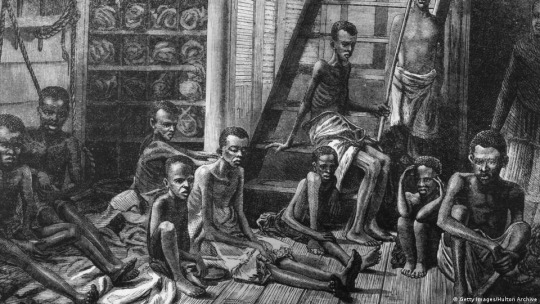
Arabs did not create the slave trade out of nothing, in fact, enslaving conquered tribes was already common practice in Central Africa when they arrived.
The West African Songhai Empire relied heavily on captured slaves in all levels of society, even as soldiers.

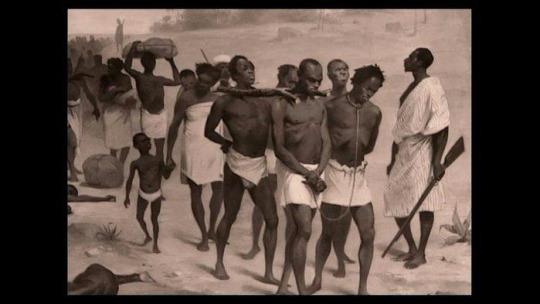
Africans themselves also played a large role in facilitating the trans-Atlantic slave trade.
African tribes conducted raids on rival groups to provide slaves for sale. African middlemen facilitated trade between European traders and African suppliers.



The Arabs also had a slave trade in Europe. Estimates are that up to 1.25 million Europeans were enslaved by Barbary pirates, who would raid villages in coastal countries like Italy, France, England and Ireland, bringing them to North Africa for sale.

In some cases entire villages would be captured, such as the Irish coastal village of Baltimore, entirely raided in 1631.
These slaves faced a brutal future, engaging in hard labour or sexual servitude, and spending nights hot and overcrowded prisons called bagnios.



Many slaves captured by Barbary pirates were sold eastwards into the Ottoman Empire. Slavery was central to the Ottoman Empire, most towns had dedicated slavery markets called Yesirs.
Slaves came from Africa, the Caucasus, the Balkans and Eastern & Southern Europe.

Sexual slavery was a big part of Ottoman society. Slavic women were popular slaves, and Köçeks became a popular source of entertainment in the 19th century:
These were young boys, usually from European backgrounds, who were circumcised, cross-dressed and trained as dancers.


Hereditrary slavery is recorded in China dating back to the Xia Dynasty in 2100 BC. Africans purchased on the Silk Road were used as a sign of wealth.
After Chinese law began to treat women as property around 1000AD it was common to sell daughters and sisters into slavery.
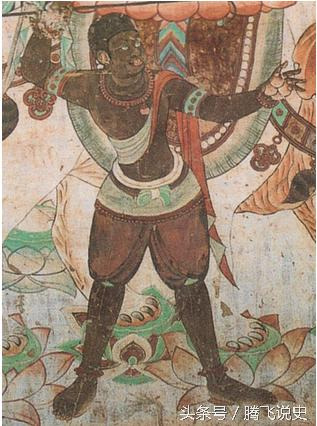

The Mongols enslaves tens of thousands of Chinese as punishment for resistance.
In the post-Mongol Ming Dynasty, thousands of slaves were employed to do bureaucratic jobs for the government, and rich families also employed thousands of slaves to perform menial labour.

Slavery was common in American civilizations like the Aztec and Maya
Among the Aztecs, slavery was a punishment for a variety of crimes or even failure to pay taxes. Husbands and wives sold each other in times of economic hardship. Slaves were identified by wooden collars.
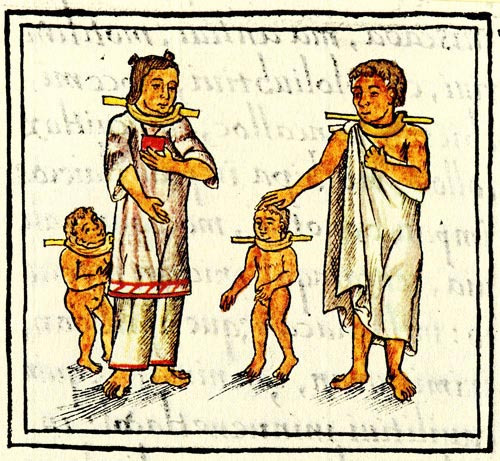
Slavery was also common practice in the civilizations of South-East Asia.
The Khmer Empire had a massive slave class that did much of the work building monuments like Angkor Wat. Historians estimate 25-35% of the population of Thailand/Burma were slaves in the 17th century.
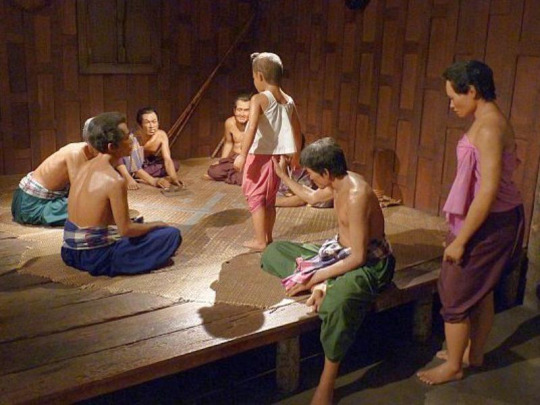

Slavery also existed among Native American tribes. Slavery was common practice among Northwest tribes like the Tlingit, for whom one third of their population during the mid-1800s were slaves.
Various tribes practiced debt-slavery and enslaved captives of other tribes.
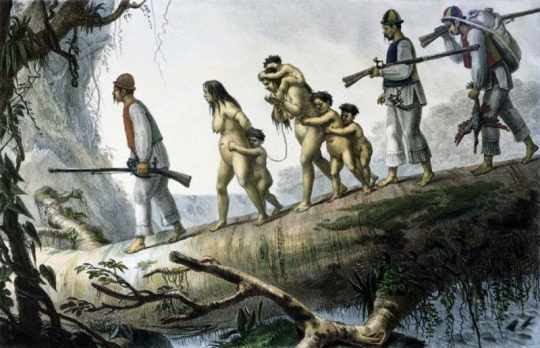

The only difference between these cases of slavery and that practiced by Europeans is that Europeans abolished slavery on humanitarian grounds, and spread this across the globe.
The intense focus on the White role in slavery is a product of widespread Anti-White animus.

==
American exceptionalism comes in two varieties: "we're exceptionally virtuous," and "we're exceptionally evil."
Both rely on lying about or being ignorant of history.
https://www.nationsreportcard.gov/dashboards/schools_dashboard.aspx

And that's just American history. Can you imagine world history?
#Keith Woods#slavery#history#history of slavery#exceptionalism#American exceptionalism#inverted exceptionalism#religion is a mental illness
24 notes
·
View notes
Text
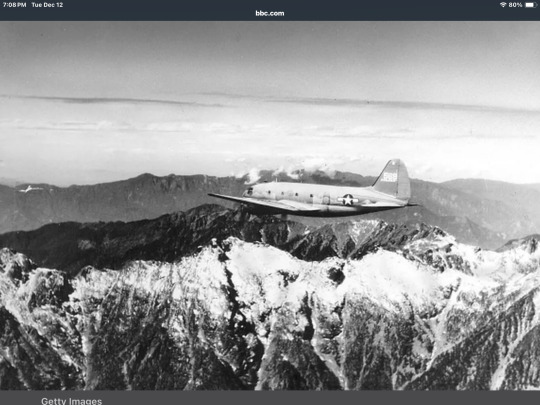
World War Two: When 600 US planes crashed in Himalayas
2 days ago
View of a US Army Air Transport Command cargo plane as it flies over the snow-capped, towering mountains of the Himalayas, along the borders of India, China, and Burma, January 1945, February 20, 1945.Getty Images
Pilots called the flight route "The Hump" - a nod to the treacherous heights of the eastern Himalayas
A newly opened museum in India houses the remains of American planes that crashed in the Himalayas during World War Two. The BBC's Soutik Biswas recounts an audaciously risky aerial operation that took place when the global war arrived in India.
Since 2009, Indian and American teams have scoured the mountains in India's north-eastern state of Arunachal Pradesh, looking for the wreckage and remains of lost crews of hundreds of planes that crashed here over 80 years ago.
Some 600 American transport planes are estimated to have crashed in the remote region, killing at least 1,500 airmen and passengers during a remarkable and often-forgotten 42-month-long World War Two military operation in India. Among the casualties were American and Chinese pilots, radio operators and soldiers.
Has India's contribution to WW2 been ignored?
The operation sustained a vital air transport route from the Indian states of Assam and Bengal to support Chinese forces in Kunming and Chungking (now called Chongqing).
The war between Axis powers (Germany, Italy, Japan) and the Allies (France, Great Britain, the US, the Soviet Union, China) had reached the north-eastern part of British-ruled India. The air corridor became a lifeline following the Japanese advance to India's borders, which effectively closed the land route to China through northern Myanmar (then known as Burma).
The US military operation, initiated in April 1942, successfully transported 650,000 tonnes of war supplies across the route - an achievement that significantly bolstered the Allied victory.
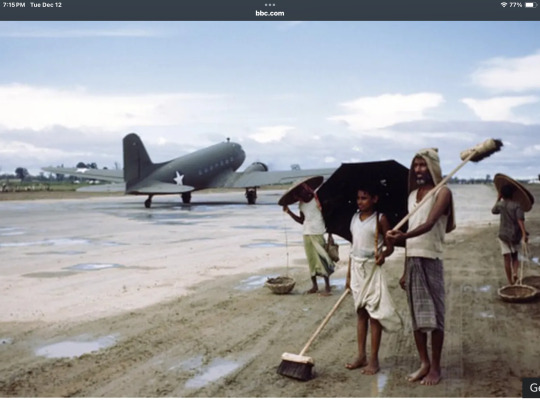
This operation sustained a vital air transport route from India to support Chinese forces in Kunming and Chunking
Pilots dubbed the perilous flight route "The Hump", a nod to the treacherous heights of the eastern Himalayas, primarily in today's Arunachal Pradesh, that they had to navigate.
Over the past 14 years Indo-American teams comprising mountaineers, students, medics, forensic archaeologists and rescue experts have ploughed through dense tropical jungles and scaled altitudes reaching 15,000ft (4,572m) in Arunachal Pradesh, bordering Myanmar and China. They have included members of the US Defense POW/MIA Accounting Agency (DPAA), the US agency that deals with soldiers missing in action.
The forgotten Indian soldiers of Dunkirk
With help from local tribespeople their month-long expeditions have reached crash sites, locating at least 20 planes and the remains of several missing-in-action airmen.
It is a challenging job - a six-day trek, preceded by a two-day road journey, led to the discovery of a single crash site. One mission was stranded in the mountains for three weeks after it was hit by a freak snowstorm.
"From flat alluvial plains to the mountains, it's a challenging terrain. Weather can be an issue and we have usually only the late fall and early winter to work in," says William Belcher, a forensic anthropologist involved in the expeditions.
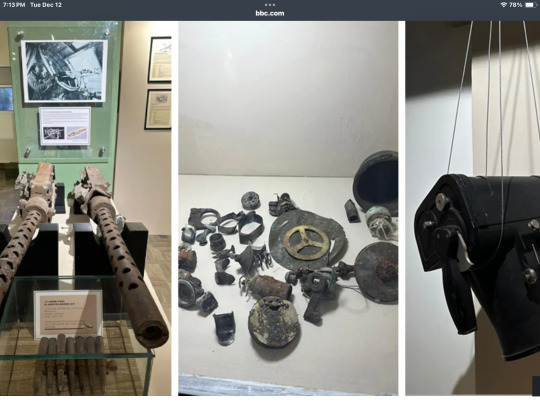
A machine gun, pieces of debris, a camera: some of the recovered artefacts at the newly opened museum
Discoveries abound: oxygen tanks, machine guns, fuselage sections. Skulls, bones, shoes and watches have been found in the debris and DNA samples taken to identify the dead. A missing airman's initialled bracelet, a poignant relic, exchanged hands from a villager who recovered it in the wreckage. Some crash sites have been scavenged by local villagers over the years and the aluminium remains sold as scrap.
These and other artefacts and narratives related to these doomed planes now have a home in the newly opened The Hump Museum in Pasighat, a scenic town in Arunachal Pradesh nestled in the foothills of the Himalayas.
US Ambassador to India, Eric Garcetti, inaugurated the collection on 29 November, saying, "This is not just a gift to Arunachal Pradesh or the impacted families, but a gift to India and the world." Oken Tayeng, director of the museum, added: "This is also a recognition of all locals of Arunachal Pradesh who were and are still an integral part of this mission of respecting the memory of others".
The museum starkly highlights the dangers of flying this route. In his vivid memoirs of the operation, Maj Gen William H Tunner, a US Air Force pilot, remembers navigating his C-46 cargo plane over villages on steep slopes, broad valleys, deep gorges, narrow streams and dark brown rivers.

Wreckage of many planes has been found in the mountains in recent years
The flights, often navigated by young and freshly trained pilots, were turbulent. The weather on The Hump, according to Tunner, changed "from minute to minute, from mile to mile": one end was set in the low, steamy jungles of India; the other in the mile-high plateau of western China.
Heavily loaded transport planes, caught in a downdraft, might quickly descend 5,000ft, then swiftly rise at a similar speed. Tunner writes about a plane flipping onto its back after encountering a downdraft at 25,000ft.
Spring thunderstorms, with howling winds, sleet, and hail, posed the greatest challenge for controlling planes with rudimentary navigation tools. Theodore White, a journalist with Life magazine who flew the route five times for a story, wrote that the pilot of one plane carrying Chinese soldiers with no parachutes decided to crash-land after his plane got iced up.
The co-pilot and the radio operator managed to bail out and land on a "great tropical tree and wandered for 15 days before friendly natives found them". Local communities in remote villages often rescued and nursed wounded survivors of the crashes back to health. (It was later learnt that the plane had landed safely and no lives had been lost.)
Does Nolan's Dunkirk ignore the role of the Indian army?
Not surprisingly, the radio was filled with mayday calls. Planes were blown so far off course they crashed into mountains pilots did not even know were within 50 miles, Tunner remembered. One storm alone crashed nine planes, killing 27 crew and passengers. "In these clouds, over the entire route, turbulence would build up of a severity greater than I have seen anywhere in the world, before or since," he wrote.
Parents of missing airmen held out the hope that their children were still alive. "Where is my son? I'd love the world to know/Has his mission filled and left the earth below?/Is he up there in that fair land, drinking at the fountains, or is he still a wanderer in India's jungles and mountains?" wondered Pearl Dunaway, the mother of a missing airman, Joseph Dunaway, in a poem in 1945.
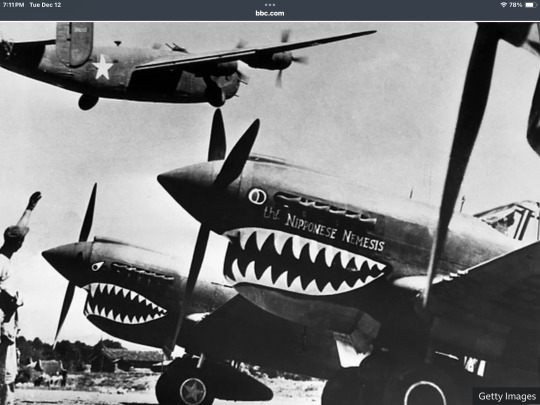
The China-bound US transport planes took off from airbases in India's Assam
The missing airmen are now the stuff of legend. "These Hump men fight the Japanese, the jungle, the mountains and the monsoons all day and all night, every day and every night the year round. The only world they know is planes. They never stop hearing them, flying them, patching them, cursing them. Yet they never get tired of watching the planes go out to China," recounted White.
The operation was indeed a daredevil feat of aerial logistics following the global war that reached India's doorstep. "The hills and people of Arunachal Pradesh were drawn into the drama, heroism and tragedies of the World War Two by the Hump operation," says Mr Tayeng. It's a story few know.
11 notes
·
View notes
Text
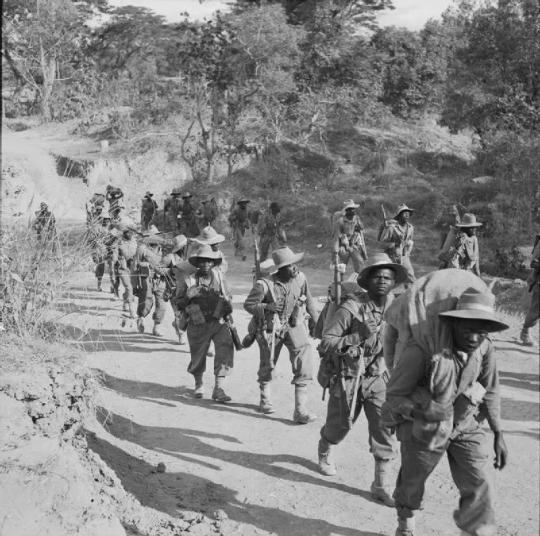
Men of the 11th Division on the road to Kalewa, Burma after crossing the Chindwin River, 1945
14 notes
·
View notes
Text
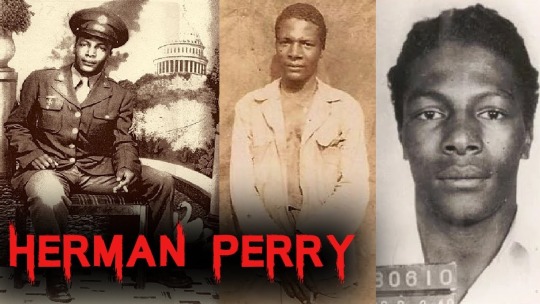
Herman Perry (May 16, 1922 - March 15, 1945) was the target of the “Greatest Manhunt of WWII.” There is no comparable search for a fugitive soldier in the annals of US military history. He was born in Monroe, North Carolina, the son of Flonnie Perry, an unwed teenager, and a man named Fraudus Allsbrook who abandoned them. His family moved to DC where he found work as a butcher and had a girlfriend who made him the proud father of a daughter. His first brush with the law occurred in early 1941 when Perry was jailed for failing to show up for his draft board physical exam. He responded to the second notice.
He served in the 849th Engineer Aviation Battalion comprised of 750 Black men. In 1943, the battalion was shipped off to construct the 1,072-mile Ledo Road connecting northeastern India and northern Burma.
He missed reveille and on the humid afternoon of March 5, 1944, he walked off from his work camp carrying an M1 service rifle rather than the pickaxe or shovel of a typical battalion laborer. Confronted by a white lieutenant who stepped out of a passing jeep and aggressively approached him, he shot twice, killing him, then vanished into the jungle.
He sustained a life in the jungle by ingratiating himself with the Naga tribe and married the chief’s 14-year-old daughter. He was helped by sympathetic Blacks in his battalion who allowed him to sneak back to camp to pilfer food and other items from military stores which he shared with tribesmen. He continued to elude capture by military police. He was wounded, captured by searchers, imprisoned, court-martialed, and sentenced to death. His spirit unbroken and now known as the “Jungle King,” he escaped.
He was apprehended on March 9, 1945, and hanged six days later. #africanhistory365 #africanexcellence
3 notes
·
View notes
Photo
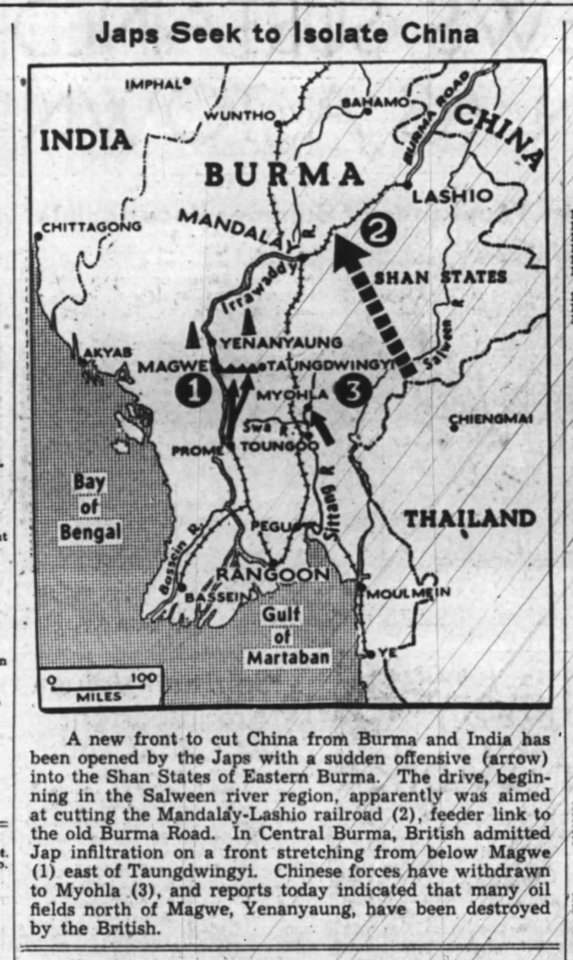
“Japs Seek to Isolate China,” Ottawa Journal. April 18, 1942. Page 13.
----
A new front to cut China from Burma and India has been opened by the Japs with a sudden offensive (arrow) into the Shan States of Eastern Burma. The drive, beginning in the Salween river region, apparently was aimed at cutting the Mandalay-Lashio railroad (2), feeder link to the old Burma Road. In Central Burma, British admitted Jap infiltration on a front (1) east of Taungdwingyi. Chinese forces have withdrawn to Myohla (3), and reports today indicated that many oil fields north of Magwe, Yenanyaung, have been destroyed by the British.
#world war II#burma campaign#japanese invasion of burma#shan states#british burma#british empire#imperial japanese army#indian army#burma road#far-eastern theatre
0 notes
Text
ruby
The glowing ruby shall adorn,
Those who in July are born;
Then they’ll be exempt and free
From love’s doubts and anxiety.
— Gregorian birthstone poem
In the middle and right at the forefront of the Crown of England is a giant polished red stone. It is called the Black Prince's Ruby - and some people say its cursed.
The stone's story starts in Iberian Peninsula, where legends says that it was owned by Abū Sa'īd, the last Sultan of Granada. Abū Sa'īd was at war with Don Pedro of Castile and finally agreed to surrender. When the two sides met to finalize the agreement however, Pedro lived up to his moniker of 'the Cruel' and murdered the off-guard sultan and his entire entourage. The blood red stone over two inches long was found on the dead ruler's body and Pedro took it as a a trophy. Bad luck came along for the ride. Shortly after the deed, in 1366 Pedro's rule was challenged by one of his brothers and he enlisted the help of the English Edward of Woodstock, a man otherwise known as the Black Prince. After the revolt was put down, Edward demanded Pedro's two daughters - and the stone, in exchange for his help. Within three years, Pedro was dead. Edward, heir to the English throne, didn't live long enough to even rule. After that, the blood stone disappeared until 1415 when Henry V wore it on his helmet in his war with France. He almost lost it, and his head along with it, to an axe blow during the battle of Agincourt. Richard III wasn't so lucky when he wore the same stone during the Battle of Bosworth, where he was killed. Despite that, the stone stayed in royal hands until Oliver Cromwell's rebellion where it disappeared for a time from the records. It showed back up again with Charles II in 1660 though and in 1838 it became the crowning jewel in Queen Victoria's coronation crown.
By then however, it wasn't considered a ruby anymore. In 1783, chemistry had advanced enough to differentiate between rubies and their look-alike, magnesium bearing spinels.
Since July's birthstone is the ruby, let's take a closer look at it before the month is over.
Rubies are considered the second most valuable jewel in the world, one of the Big Four, with the others being diamonds, sapphires and emeralds. They are second in hardness only to diamonds. Ancient sanskrit gave them the name ratnaraj, which means 'the king of jewels'. They have been mined in Myanmar since 2500 BC (or only 600 AD according to another site, though there are records of rubies traveling the North Silk Road from China as far back as 200 BC and they are mentioned in the Old Testament and the Torah so this is one of those wobbly 'facts'). Still, rubies that come from that part of the world are still considered the high standard today. In color, they can range from a red-purple to 'pigeon blood' red to orange or pink. Rubies are used in lasers, with the first one being built in 1960. Rubies from Greenland are said to be the oldest in the world, clocking in at 3 billion years old.
Impressive, isn't it? And anything with this much history, has to have stories that go with it. Let's talk superstition.
With such a rich, red color, of course rubies would be associated with blood. In Burma, India and China, rubies were placed in helmets, breastplates and weapon scabbards, with the belief that they would both protect their wearer and encourage bravery, strength and stamina. In Persia, the ruby granted mental clarity as well as divine power. The Chinese gave rubies to each other as good luck and protective charms. It was said that when evil approached a dark blot would appear on the surface of the red gem and when the darkness cleared away the evil had passed by. In India, wearing a ruby on the heart side of your body will allow you to live in peace. In many cultures, the rich, red color of rubies makes them symbolic of love and passion. Even today, tradition holds that rubies are the ideal gift to give for 15th and 40th wedding anniversaries. Folklore says that rubies help with bleeding, inflammation and body heat.
And, of course, Dorthy's shoes in the 1939 technicolor movie The Wizard of Oz were ruby slippers, which showed up against the yellow brick road much better than the simple silver shoes of the book by the same name would have.
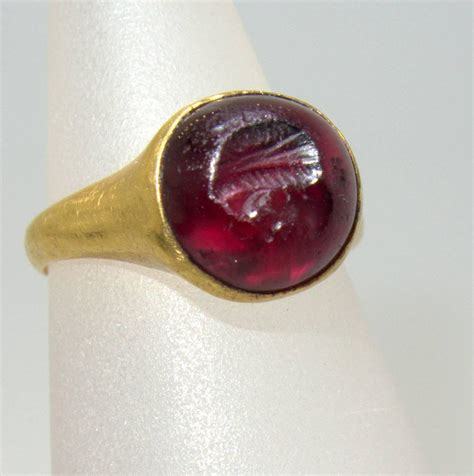
#superstition#folklore#ruby#birthstone#july#history#gemstone#jewelry#good luck#lucky#romance#crown jewels#united kingdom#black prince#edward black prince
13 notes
·
View notes
Text
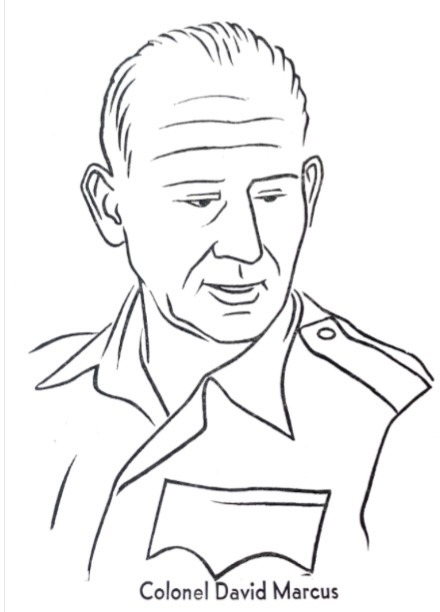
#DidYouKnow David “Mickey” Marcus was a colonel in the United States Army in 1947, when David Ben Gurion asked him to recruit a military adviser to design the future State of Israel’s army. Not finding anyone suitable, Marcus volunteered to do it himself. The army permitted this so long as Marcus disguised his name, so he became “Michael Stone.”
Marcus was Israel’s first general and designed the command-and-control structure of the army, adapting his American experience in the Second World War. In 1948, he built the “Burma Road,” an alternate route from the coast to break the siege of Jerusalem.
Marcus was fatally shot 75 years ago, on June 10, 1948 by an Israeli soldier on guard duty. Marcus did not know much Hebrew, and the soldier did not know English, resulting in tragic confusion when a password could not be provided as Marcus returned to his base at night.
He was buried at the military cemetery at West Point, the only soldier interred there who was killed while fighting for a foreign army.
Marcus was portrayed by Kirk Douglas in the 1966 Hollywood film Cast a Giant Shadow. This image is from the Life in Israel Coloring Book published by the Ktav Publishing House (New York) in 1949 and is part of David Matlow‘s amazing collection showcased weekly at Canadian Jewish News (The CJN).
You can hear David in conversation with Steven Shalowitz on Jewish National Fund - USA’s podcast, #IsraelCast. It’s available wherever you get your podcasts and at jnf.org/IsraelCast.
David has assembled 75 of his treasures in a new book to celebrate Israel’s 75th birthday. It is available for free download at https://herzlcollection.com/75-treasures
Humans of JNF
13 notes
·
View notes
Note
shuffle your favorite playlist and post the first five songs that come up. then copy/paste this ask to your favorite mutuals <3
Hi, Belle! <3 Thanks for the ask!
The List by Moonchild
Rainy Night in Tokyo by Michael Franks
Secret O' Life by James Taylor
Burma Road by Greg Adams
Welcome to the Party by Pop Smoke
Thanks again for the ask! I've been swamped with work recently, so your message helped to lift my spirits :-)

2 notes
·
View notes

